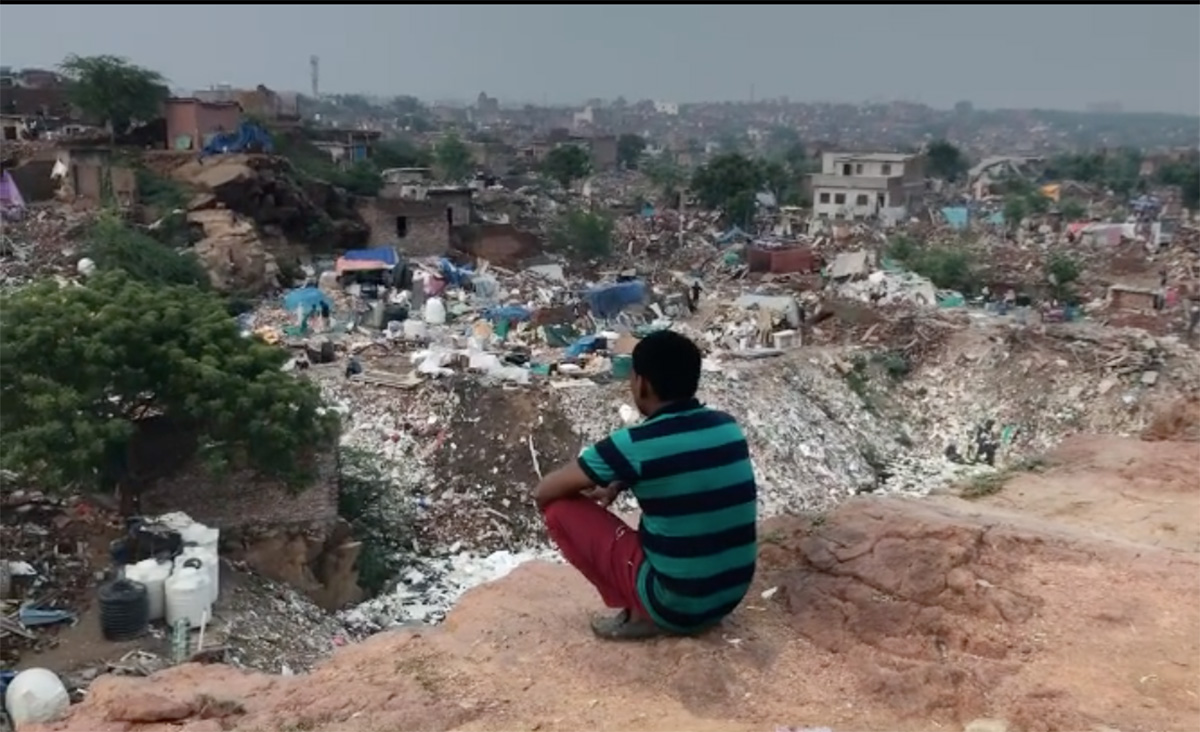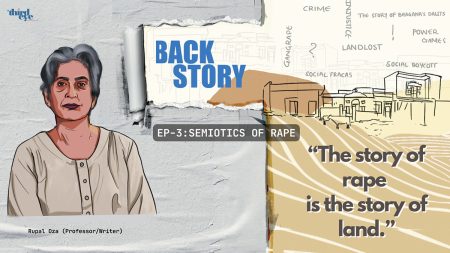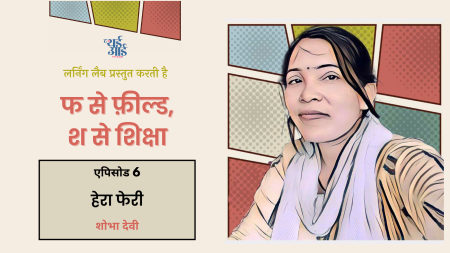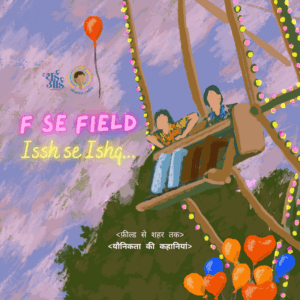This is a continuing conversation with Gautam Bhan, urbanist and educator, Associate Dean, School of Human Development, as well as Senior Lead of Academics and Research at the Indian Institute of Human Settlements (IIHS) in Bengaluru, India.
You can read Part One of the conversation with The Third Eye here.
In Part Two we discuss the limitations of anger, the potential for empathy instead if accompanied by rigour, and the underrated merits of using joy pedagogically.
TTE: I’m curious about what educators do with the range of emotions that must arise in students, when they engage with issues of social justice. Are there certain emotions that challenge the best of pedagogies?
Gautam: For me, personally, anger is very difficult to use pedagogically. Anger is like violence, it disrupts. You cannot direct it. I know many people who think that it’s good to use anger and direct it towards change. But anger, by definition, haath mein nahin aayega. So, the trick is for me to say, can we talk about the things that should be beneath this anger for it to be constructive? And what I’m leading towards, what I’m really getting to, is the fact that anger must come rooted in compassion.
You must be angry because you feel compassion. And the force I want to tap into pedagogically is the compassion that lies beneath anger and then say, what is the rigour to your compassion?
That is the pedagogical moment.
My friend Mario D’Penha once said something to me that I have now been parroting for 10 years in class after class, to student after student. He told me once that the key was to find a balance in our lives between empathy and rigour. That he knew too many people who had lots of empathy and very little rigour. And he knew too many people who had lots of rigour but no empathy. And both lead to very difficult outcomes.
I think the work we have to do is say that if this is your anger, give your anger a language of compassion so it has a moral anchor, but also give your anger the rigour of saying, well, what are you angry about? Be specific about what you’re angry at. If it’s about the system, understand the system. Start asking questions, figure out why our GDP spending on health has been 1% for the last 25 years. Ask the right questions.
The role of pedagogy, particularly, is about giving rigour and empathy to an emotion like anger, about giving it a language.
It’s about making a way so that it has someplace to go. Anger is that particularly difficult thing where on the one hand, it is utterly essential in order to mobilise change, but it is in nobody’s control. And therefore, pedagogically, I’m always saying this anger has fear underneath it, it also has compassion underneath it, and fear and compassion will pull in different directions.
We used to have this email signature, many people had it in college: ‘If you are not outraged, you are not paying attention.’ Yes. But if you are constantly outraged you are not doing work. I think too much of our work is about acknowledging emotion and affect but there is also work on how one builds on that. I keep telling my students, yes, I know how badly the world is messed up, but I want at least two ideas from you on what you could build. Standing in the ashes is not work.

If you really want to respond to migrants walking on the road, ask why they felt they had a better chance at home than in the city. Ask why the rent moratoriums did not work. That’s the role of pedagogy. Because if we can use the situation of the walking migrants, to launch a way of thinking about safety nets and urban social protection, it’s possible that theory, practice and politics come together.
After the pandemic, the question we should be asking is, what are the institutions that work for us? Is it the family? Is it the gali that we talked about? Is it friendship? What are the relations you can rely on? Is it the community that identifies with that space? Is it the union? Are they co-workers? What are the socialities we can build from? You can’t just burn everything to the ground and say it’s all shit.
This, to me is our biggest pedagogical challenge: what do we build and how are we building it. And I don’t think of institutions as gigantic sansthas and powerful things. To me a union is an institution; a set of neighbours who collectively care for each other’s children in the gali is an institution. You can call them social formations, you can call them collectives…but how do we build on those networks?
We know the endless struggle is against forgetting.
And people will want to forget, in order to preserve their own emotional stability. So many of my students were involved in [Covid] relief work and what’s wonderful is when I see them couple of years out of our classroom and you’re watching them work; and watching them even under situations of extreme emotion, they’re constantly asking critical analytical questions. If you can hold on to that rigour in the middle of your empathy then we have a chance.
But how do you teach empathy?
We have this debate all the time. I don’t think you can teach empathy; but I think you can make opportunities where students have to encounter experiences, and stories and narratives that at least give them the opportunity to create it. So, what do I mean by this? I can talk about caste, gender and sexuality but if your classes, your faculty and your students are not diverse, then forget about it.
In our curriculum [for the Urban Fellows Program at IIHS], we have this thing called the Commons, I had mentioned this before, which is our interdisciplinary foundation. We teach the urban but our standpoint is that the urban has been colonised by planning, architecture and design.
And the urban is not planning, architecture and design, is it? The urban is social, spatial and economic.
Our students come from everywhere—visual art, industrial design, economics, geology, GIS planning, public political science, media, dentistry, etc. And our first task is to teach the economists how to think about culture. You have to teach the anthropologist how to read finance. You have to teach the finance specialist how to think about the environment and so on. And we do this according some core sensibilities we have as our internal guide that informs the whole academic approach.
But most importantly, if I have to teach the urban, the urban has to be in my classroom. If it is not in my classroom, I cannot teach it. Now, if there aren’t queer people, Dalit people in the room, how will this work? So, I don’t need it because it’s inclusive for some. I need it from the point of pedagogical excellence. And I think it’s pivotal, what we’re saying is without your life experiences we cannot teach. Because those life experiences are what we are teaching, we cannot represent them without it.
There are other ways to teach sensibilities. For example, in our curriculum design, a third of all our time is spent in the city, in the field, in neighbourhoods, etc. Those are key interactions. You must see things you’ve not seen. You must go places you’ve not been to. You must talk to people you haven’t talked to.

Tell us a little bit about how the interdisciplinary approach works?
I’ll give you an example of a project. There is a graduate, her name is Gauri Nagpal, who has designed a street-vending cart that fits the new municipal norms for vending zones and has an electric engine inside it. But most importantly, the whole cart can be built and maintained by a local mechanic repair shop using spare parts. She came from Srishti Design School and after she came to us, she could integrate her design training with a knowledge of the town vending act, is able to look at, and make sense of the Chandigarh municipal plan; can look at the area of the vending zone and then create, not just a product, but a repair business model.
She keeps telling me I’m not interested in the cart. I’m interested in the fact that this becomes this cycle repair guy’s business. Already redhi hai, redhi ab upgrade karo.
So, what she’s selling is repair…its brilliant to me because that’s what I feel is possible with this pedagogy.
I can give you many examples of these kinds of projects. We were working with the Domestic Workers’ Union on a study on how domestic workers breastfeed their babies. Because the question was, how do domestic workers exclusively breastfeed for six months? Who gets six months maternity leave in the informal economy? So, the question as to how do domestic workers breastfeed their children, and the answer is of course they don’t.
We started doing this research and found that these women in Delhi were back at work three weeks after delivery. Forget exclusive breastfeeding for six months, her own health is at terrifying risk right now. So, then we move to proposition state: what would it take to delay the return to work after childbirth for domestic workers? Because the longer she stays home the better chance at health she has.
When we look at the problem, we don’t think we have some magical solution. All we know is incrementally thoda better hoga because that’s what inequality is. There is no magic bullet. And we drill this into our students: stop asking us how to fix the system. Nobody fixes a system, it is a system…
And then at some point later the [domestic workers’] union said to us, “You know, we keep hearing that rent bahut hi zyada hai.” So we tried to figure out kyun. Now, here is where that interdisciplinarity is perfect.

Now, the live-in domestic workers model is finished. Now, everyone goes to paanch-paanch ghar for dedh-dedh ghanta, which means you are walking everywhere. That means your transport system becomes key. So, there’s a gendered understanding of why non-motorised transport policy is a specific policy for women and working women and isme tumhara sexuality, gender, caste, public space, saara hai. But, it’s not that safety-honour story. It’s a question of working women’s mobility and asking, “Who is walking?”
So, the transport research will tell you that women tend to make fewer trips and shorter trips than men. They don’t tend to cross the city on public transport. They tend to walk more, shorter distance, shorter duration. One set of students follows 10 domestic workers for a month and draws mobility maps to see their travel patterns. When do they switch? When do they go? Lovely drawn visual time diaries of their day. One set starts looking at rental housing arrangements and what did we find? We found that since these domestic workers were walking to middle-class colonies for work, they had to live near the middle-class colonies. Affordable housing was in the corners of the city, where they can’t live. They had to live next to those middle and upper middle-class houses, and hence pay disproportionately higher rent than other informal workers. Therefore domestic workers ka rent situation spatialises differently. These discoveries are the possibility of interdisciplinary work.
Now, imagine a public transport system where they can efficiently and affordably get to work from wherever they are. They’ll cut their rent by 30%. But they’re not going to do it until that transport system comes. So, when [Delhi Chief Minister Arvind] Kejriwal says we will make the bus free for women and people think it’s some kind of ploy, they don’t understand how pivotal it is not as a transportation strategy but as an economic development strategy.

So you know, every once in a while you will find one data point that is like that thread sticking out of your shirt, and if you pull it the whole thing unravels.
That data point—this is the kind of stuff we try and teach our students to hold on to. Find the thing that holds the threads together and pull it because if women’s labour force participation increases, everything else has started to work in the system.
You may know that Cambridge has started an MPhil programme in 2020 called Anthropocene Studies. It’s led by the Department of Geography. It’s clearly a recognition of the times we are in. When we did our Public Health edition during the Covid second wave, it emerged in case after case that we were turning to the rural for solutions for survival. Do you think the future of urban studies is going to tilt the same way?
Totally. As the older paradigms fall apart and all our theories of Third World-First World, industrial development and modernisation, all of those fall apart, we need new paradigms in a place.
Somewhere, I think that this Anthropocene allows us for a fundamental rethinking of the urban, of the human, of society. I think it’s our only hope, to let go of some of the real inertias of 20th century economic thought, development thought and socio political thought. I think the only thing that worries me sometimes in those models is that, for example, India has a very low per capita ecological footprint right now, in one way very sustainable, but we have that because our people live shit lives. So, we need to find a balance. We can’t say that we remain ecologically stable by putting the cost of that on our human development. So those trade-offs are going to be very difficult. But let’s see, they will come.
What will be the new ways: if not GDP-reliance, what else?
What’s that other figure that can dominate our imagination? One of the SDGs (Sustainable Development Goals) slogans was, “Every country’s a developing country.” U.S. ‘development’ is high, but economic footprint is disastrous. So, we have to let go of GDP. What do we put in its place?
Thank you Gautam, I had one last question. Because we started with anger is an emotion and how that can be used pedagogically, I was wondering, if as an educator, in a personal sense, what some of the other emotions might be that you have used or channelled pedagogically?
I have to say I am a very, very big believer in joy. I think it’s underused, pedagogically. I think that it’s very hard to have empathy if it is not joyful. You know, one thing that distinguishes empathy from pity is that you can also empathise with joy.
I think joy is really, really underrated as a pedagogical tool.
There is joy in a certain work, there’s joy in collective life, there’s joy in friendship. And joy requires rigour.
You know, when I talk to young queer people, for example, they ask, “How do we grow old?” I always tell them, “I can’t tell you that. But I can tell you how I grew old. At some point, a bunch of us decided that we will put all our work into friendship. And we will give it priority over romance.” That was the deal. And we meant it.
We’ve lived together. We’ve seen partners come and go. We have been very clear. The only people who stick with us romantically are people who don’t want to be primary in our lives and are willing to be at the same darja as everybody else. But without the joy that friendship has given, where do you get the fuel to keep going? You can’t mobilise empathy and anger and compassion if you’re not also going to mobilise joy. We can’t only be motivated by anger and compassion. We have to be motivated by joy and happiness.
Joy is sort of hard to articulate, but I’m a big fan of it. I ask my students all the time, when they come and talk about this and that, and I’m like all that’s okay, just tell me two things that make you happy. You have to have some articulation of what brings you joy. Woh nahin hai toh bhaiya mar mar ke ghut ghut ke zindagi jiyoge. It’s not worth it. Justice cannot come without joy.





